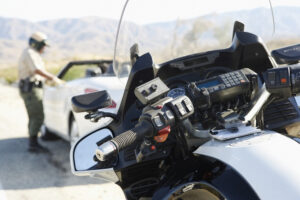Have you ever noticed that during some interesting cell phone conversations (while you are driving your car!) that you forget your speed? Or that those bright green, yellow and red lights overhead actually have a meaning? Well, new research is good (or bad) depending on whether you are a chronic cell phone driver.
The amazing new research recently published by the Human Factors and Ergonomics Society demonstrated that cell phone drivers are as unsafe behind the wheel as a legally intoxicated driver.
“Driving while talking on a cell phone is as bad as or maybe worse than driving drunk,” said Drews, one of the Utah psychologist authors, who said alcohol was involved in 40 percent of the 42,000 annual U.S. traffic fatalities. Just like people who have been drinking, the cell phone users did not believe themselves to be affected, the researchers found.
The study found that cell phone drivers kill 2,600 victims per year and injury another 330,000. Everyone who drives these days has been cut off by a cell phone driver who had no idea that they had even made the dangerous maneuver till you honked at them. The psychologists who conducted the cell phone use studies summarized several new findings as follows:
• Motorists who talked on either handheld or hands-free cell phones drove slightly slower, were 9 percent slower to hit the brakes, displayed 24 percent more variation in following distance as their attention switched between driving and conversing, were 19 percent slower to resume normal speed after braking and were more likely to crash. Three study participants rear-ended the pace car. All were talking on cell phones. None were drunk.
• Drivers drunk at the 0.08 percent blood-alcohol level drove a bit more slowly than both undistracted drivers and drivers using cell phones, yet more aggressively. They followed the pace car more closely, were twice as likely to brake only four seconds before a collision would have occurred, and hit their brakes with 23 percent more force. “Neither accident rates, nor reaction times to vehicles braking in front of the participant, nor recovery of lost speed following braking differed significantly” from undistracted drivers, the researchers write.
“Impairments associated with using a cell phone while driving can be as profound as those associated with driving while drunk,” the studies authors’ concluded.
The human factors researchers also summarized some of the previous cell phone driver research in their news release:
• A 2001 study (surprisingly) showing that hands-free cell phones are just as distracting as handheld cell phones.
• A 2003 study showing that the reason is “inattention blindness,” in which motorists look directly at road conditions but don’t really see them because they are distracted by a cell phone conversation. And such drivers aren’t aware they are impaired.
• A 2005 study suggesting that when teenagers and young adults talk on cell phones while driving, their reaction times are as slow as those of elderly drivers.
There is no question that more and more car and truck accidents and wrecks are being caused by driver cell phone inattention. Always note if a careless driver has been using a cell phone, and actually request the other driver’s cell phone number during any exchange of information after a wreck. It is possible to subpoena the driver’s cell phone bill for the day and time of the wreck to determine or confirm cell phone use. And because most of the public now has a cell phone, most folks on a jury who learn that the targeted careless driver was talking on a cell phone at the time of a car wreck will have little sympathy for their defense.









Comments for this article are closed.